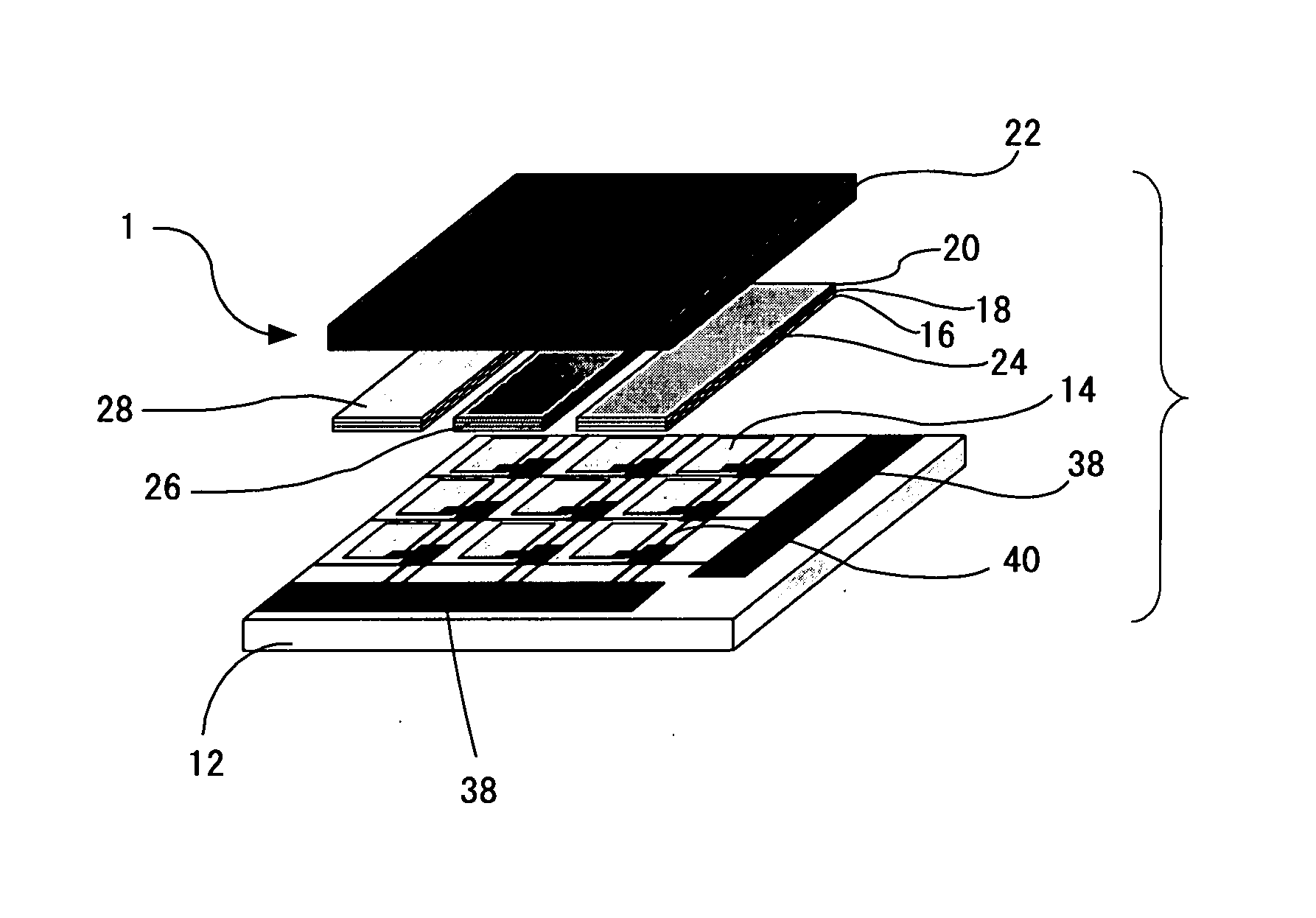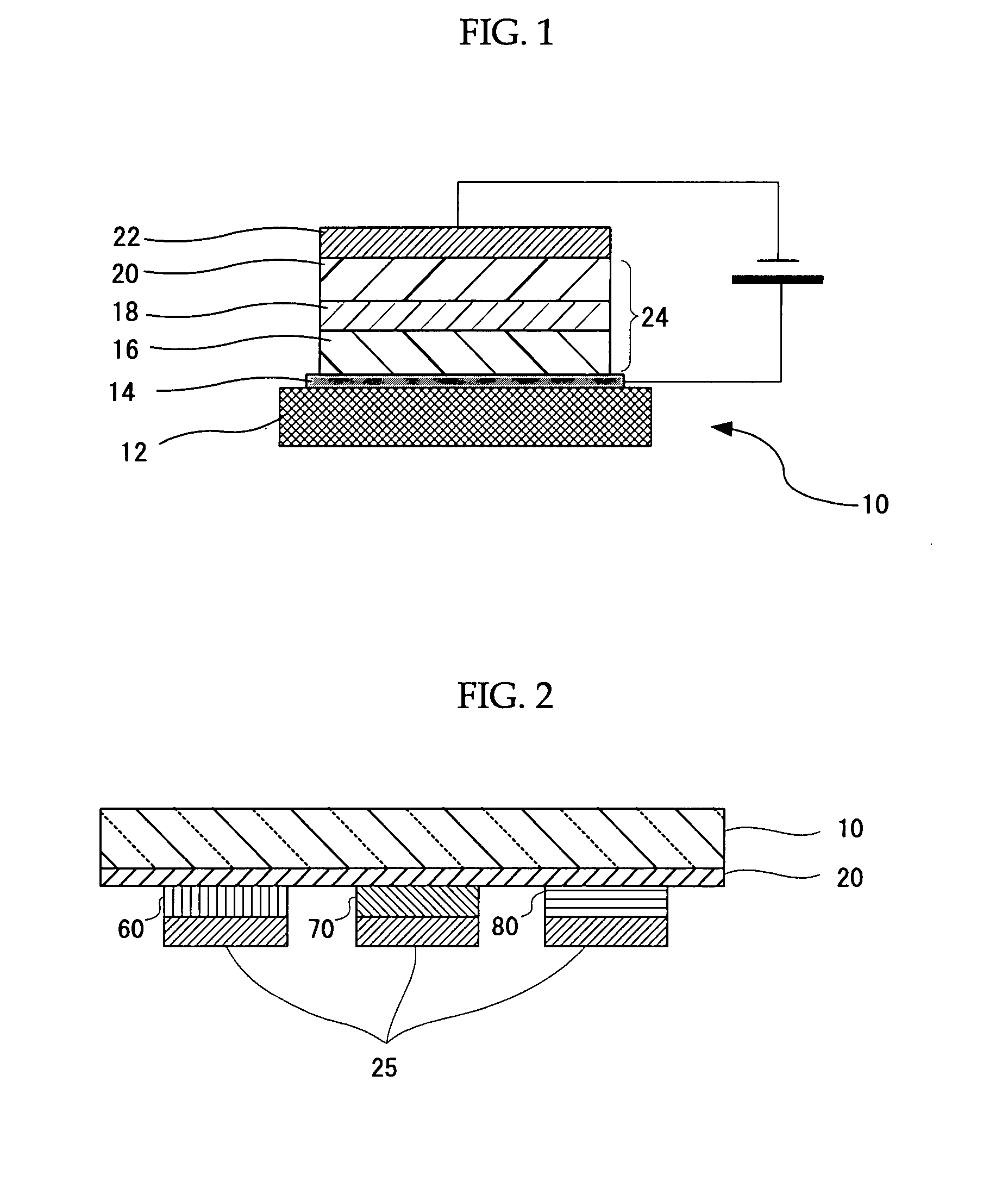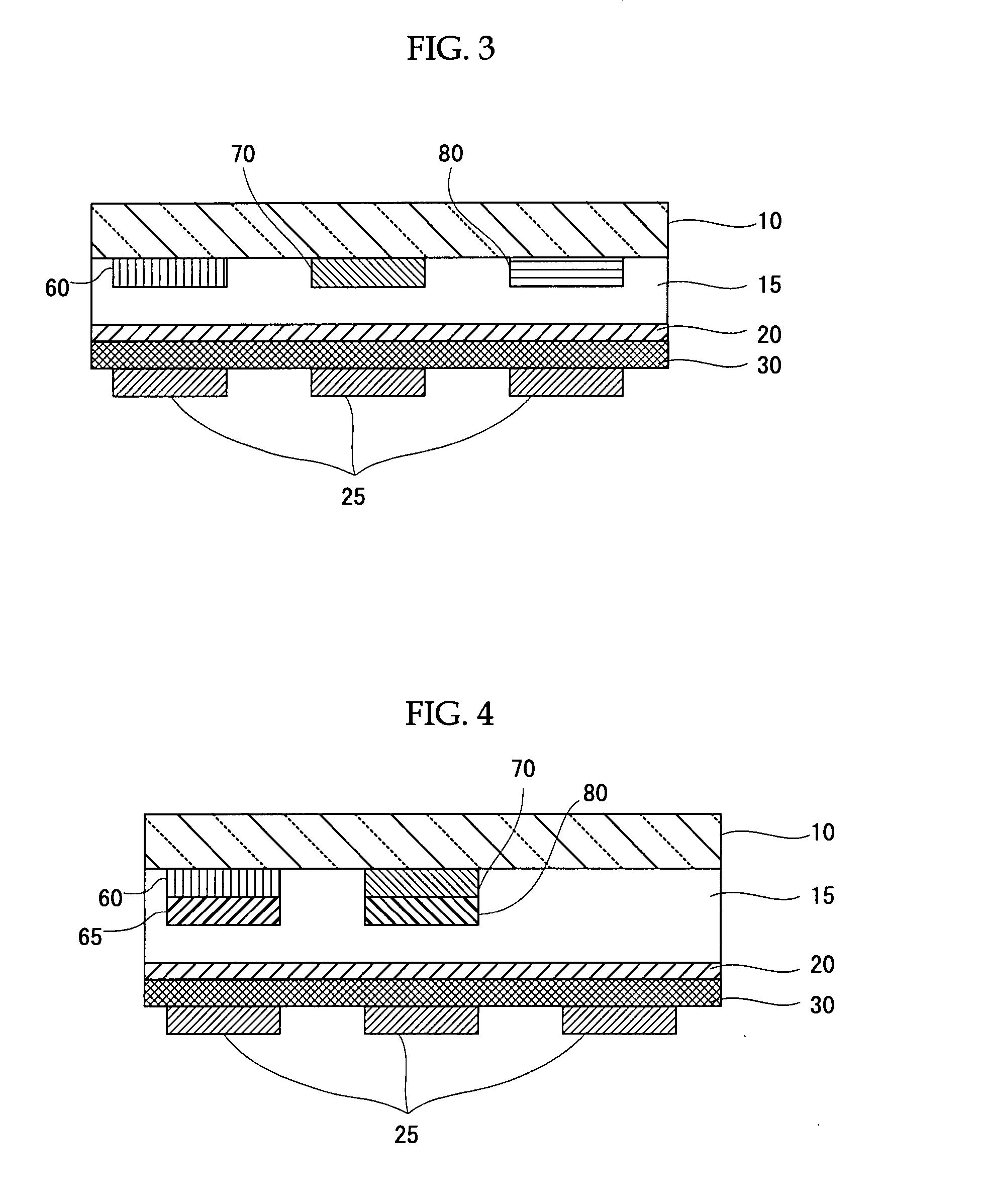Metal Complex, Luminescent Solid, Organic El Element and Organic El Display
a technology of organic el elements and complexes, applied in the direction of discharge tube luminescnet screens, iron organic compounds, platinum organic compounds, etc., can solve the problems of poor margin of nominating materials of phosphorescent materials, insufficient emitting efficiency of metal complexes, etc., to improve the emitting efficiency of el elements, prolong the operating life, and improve the effect of durability
- Summary
- Abstract
- Description
- Claims
- Application Information
AI Technical Summary
Benefits of technology
Problems solved by technology
Method used
Image
Examples
synthesis example 1a
Synthesis of Pt(2,6-bis(2-pyridyl)-4(1H)-pyridone)chloride (hereinafter referred to as “Pt(dppdn)Cl”)
[0189] Pt(2,6-bis(2-pyridyl)4(1H)-pyridone)chloride (hereinafter referred to as “Pt(dppdn)Cl”) was synthesized as follows. Specifically, 2,6-bis(2-pyridyl)4(1H)-pyridone (2.4 mmol, 838 mg) and K2PtCl4 (2.6 mmol, 1100 mg) were added to degassed acetic acid (60 ml) and the mixture was refluxed at 130° C. for two days. Upon allowing the mixture to cool, light yellow crystal was precipitated and thus sampled after filtering. The filtered solid was rinsed sufficiently with methanol, water and dimethyl ether, followed by vacuum drying. The resulting coarse powder was recrystallized in dichloromethane thereby to prepare an intended product of Pt(dppdn)Cl as yellow powder in an amount of 464 mg. The yield was 40%. The synthesis reaction may be expressed as following.
synthesis example 2a
Synthesis of Pt(2,6-bis(2-pyridyl)-4(1H)-pyridone)phenoxide (hereinafter referred to as “Pt(dppdn)oph”)
[0190] Pt(2,6-bis(2-pyridyl)4(1H)-pyridone)phenoxide (hereinafter referred to as “Pt(dppdn)oph”) was synthesized as follows. Specifically, the Pt(dppdn)Cl (0.1 mmol, 48 mg) obtained in Synthesis Example 1a was added to acetone and the mixture was stirred, to which then sodium phenoxide trihydrate (0.15 mmol, 26 mg) dissolved in methanol 20 ml was added dropwise, then the mixture was stirred at room temperature for 10 minutes. Then a few drops of water were added to the reactant to bring forward the reaction, consequently, light yellow solid was gradually precipitated and thus the reactant was stirred for three hours while heating. Thereafter, the reactant was allowed to cool, then deposition of light yellow solid was taken through filtering, followed by rinsing with pure water, methanol and diethylether in order and vacuum drying thereby to prepare an intended product of Pt(dppdn)...
synthesis example 3a
Synthesis of Pt(2,6-bis(2-pyridyl)4(1H)-pyridone)-(1,2,4-triazole) (hereinafter referred to as “Pt(dppdn)(taz)”)
[0191] Pt(2,6-bis(2-pyridyl)-4(1H)-pyridone)-(1,2,4-triazole) (hereinafter referred to as “Pt(dppdn)(taz)”) was prepared in the same manner as Synthesis Example 2a except that the sodium phenoxide trihydrate was changed into 1,2,4-sodium triazole. Consequently, an intended product of Pt(dppdn)(taz) as light yellow crystalline powder was obtained in an amount of 43 mg. The yield was 84%. The synthesis reaction may be expressed as following.
PUM
| Property | Measurement | Unit |
|---|---|---|
| voltage | aaaaa | aaaaa |
| internal quantum efficiency | aaaaa | aaaaa |
| internal quantum efficiency | aaaaa | aaaaa |
Abstract
Description
Claims
Application Information
 Login to View More
Login to View More - R&D
- Intellectual Property
- Life Sciences
- Materials
- Tech Scout
- Unparalleled Data Quality
- Higher Quality Content
- 60% Fewer Hallucinations
Browse by: Latest US Patents, China's latest patents, Technical Efficacy Thesaurus, Application Domain, Technology Topic, Popular Technical Reports.
© 2025 PatSnap. All rights reserved.Legal|Privacy policy|Modern Slavery Act Transparency Statement|Sitemap|About US| Contact US: help@patsnap.com



